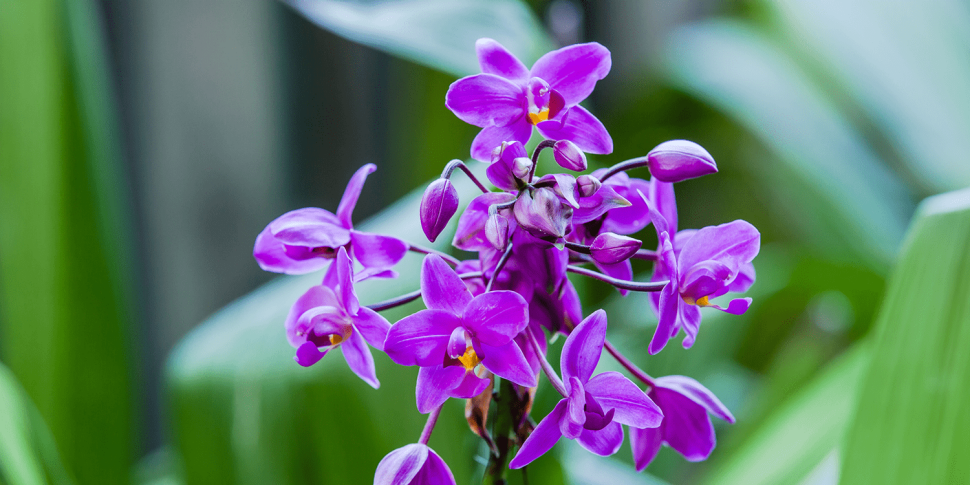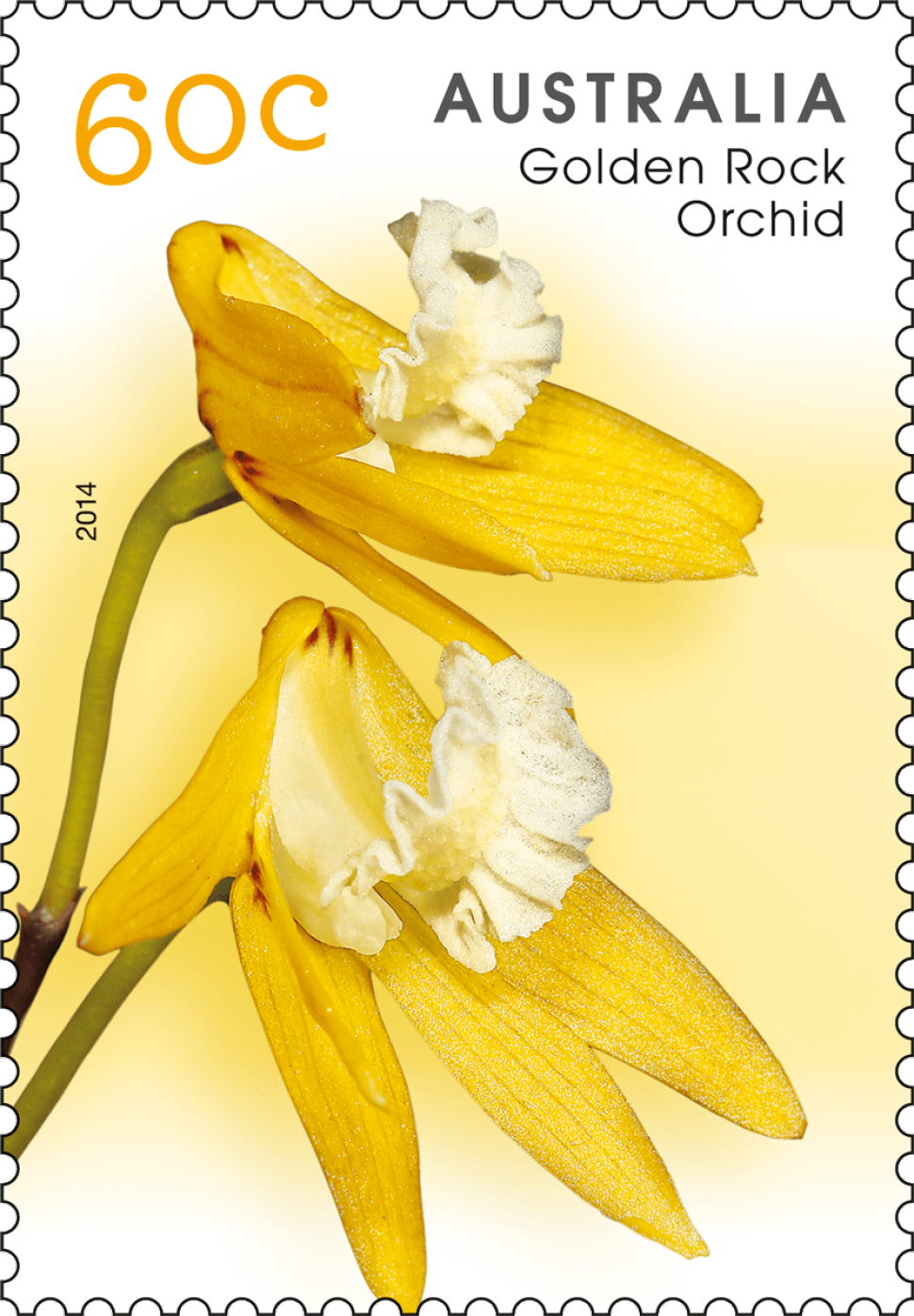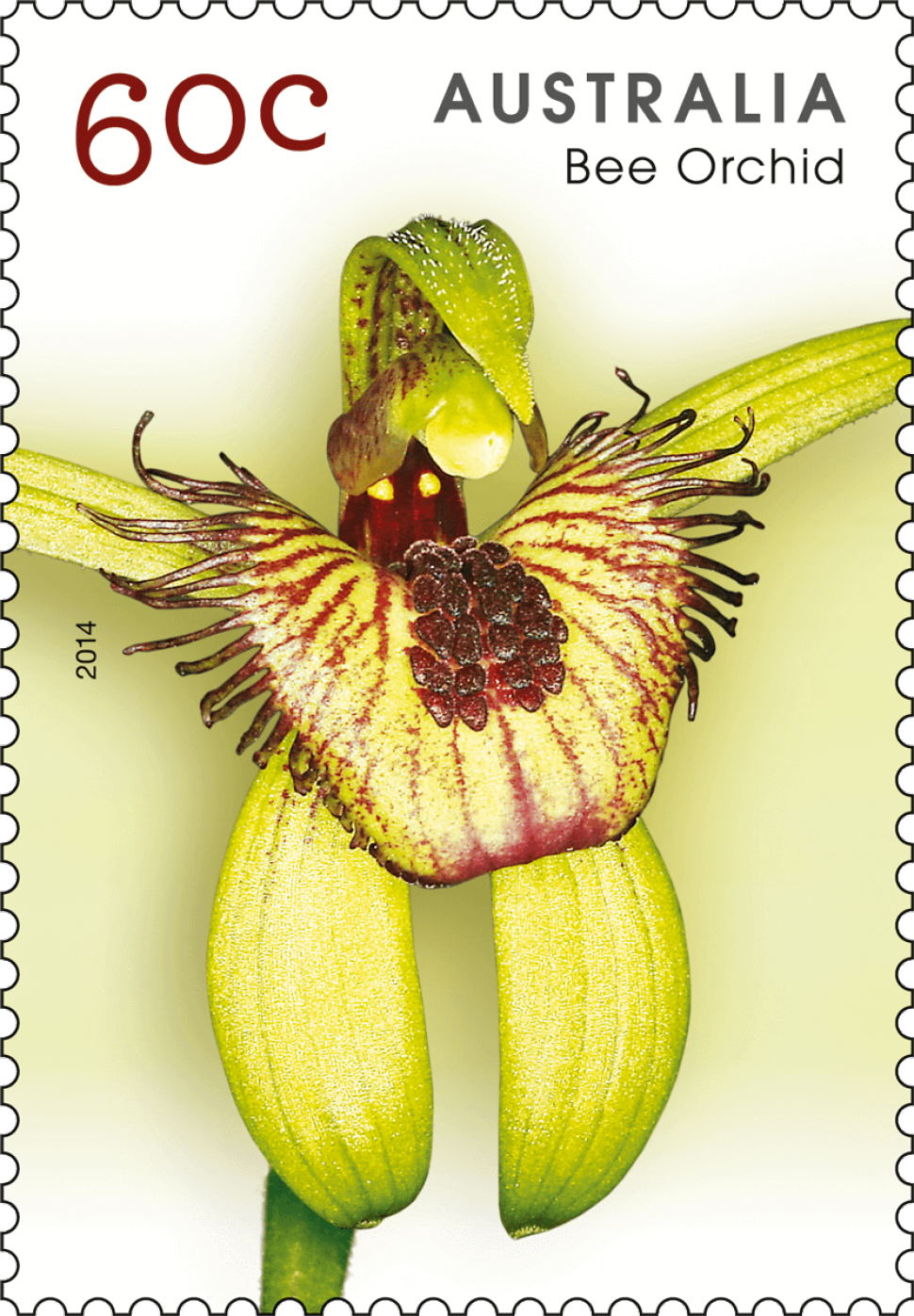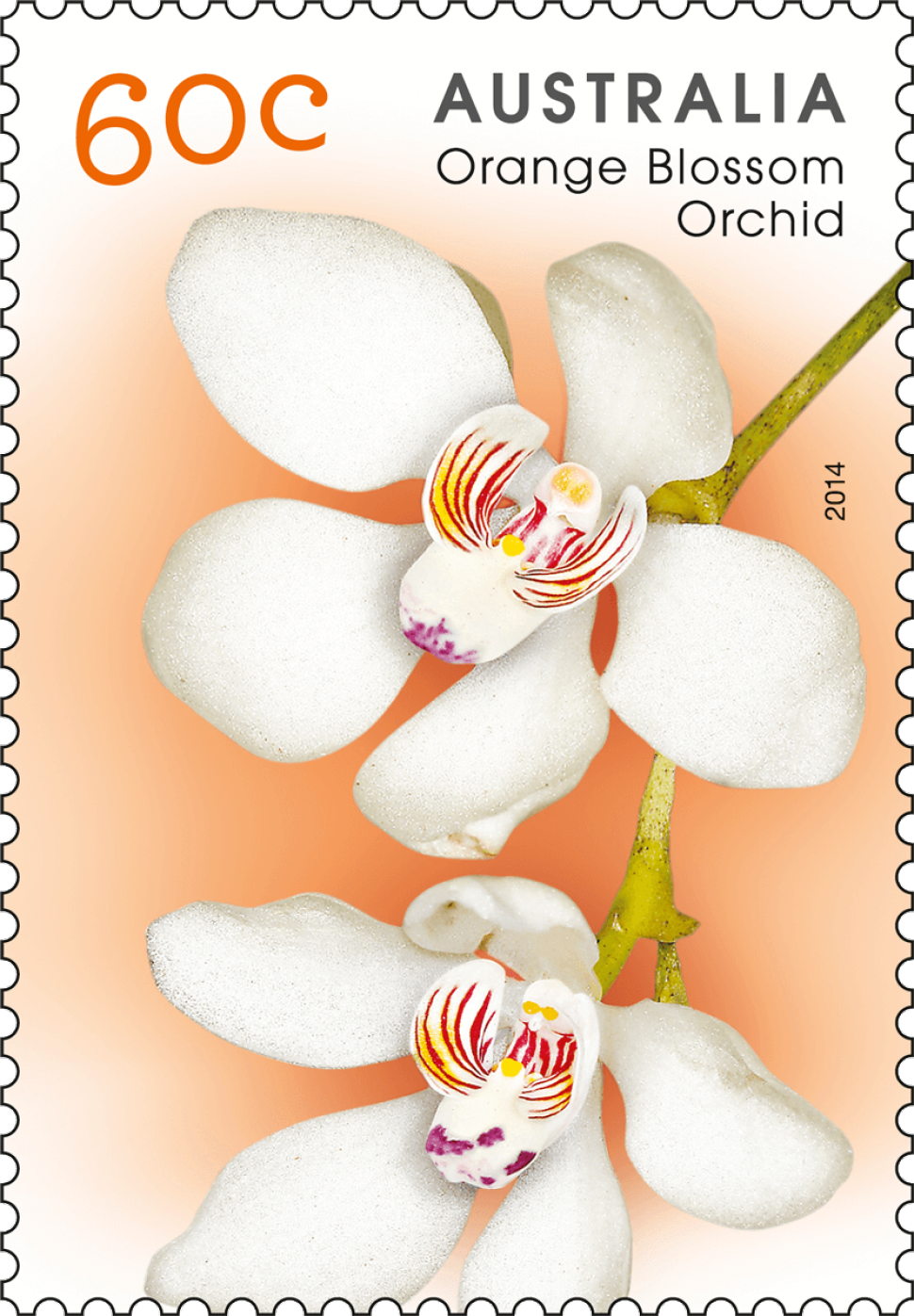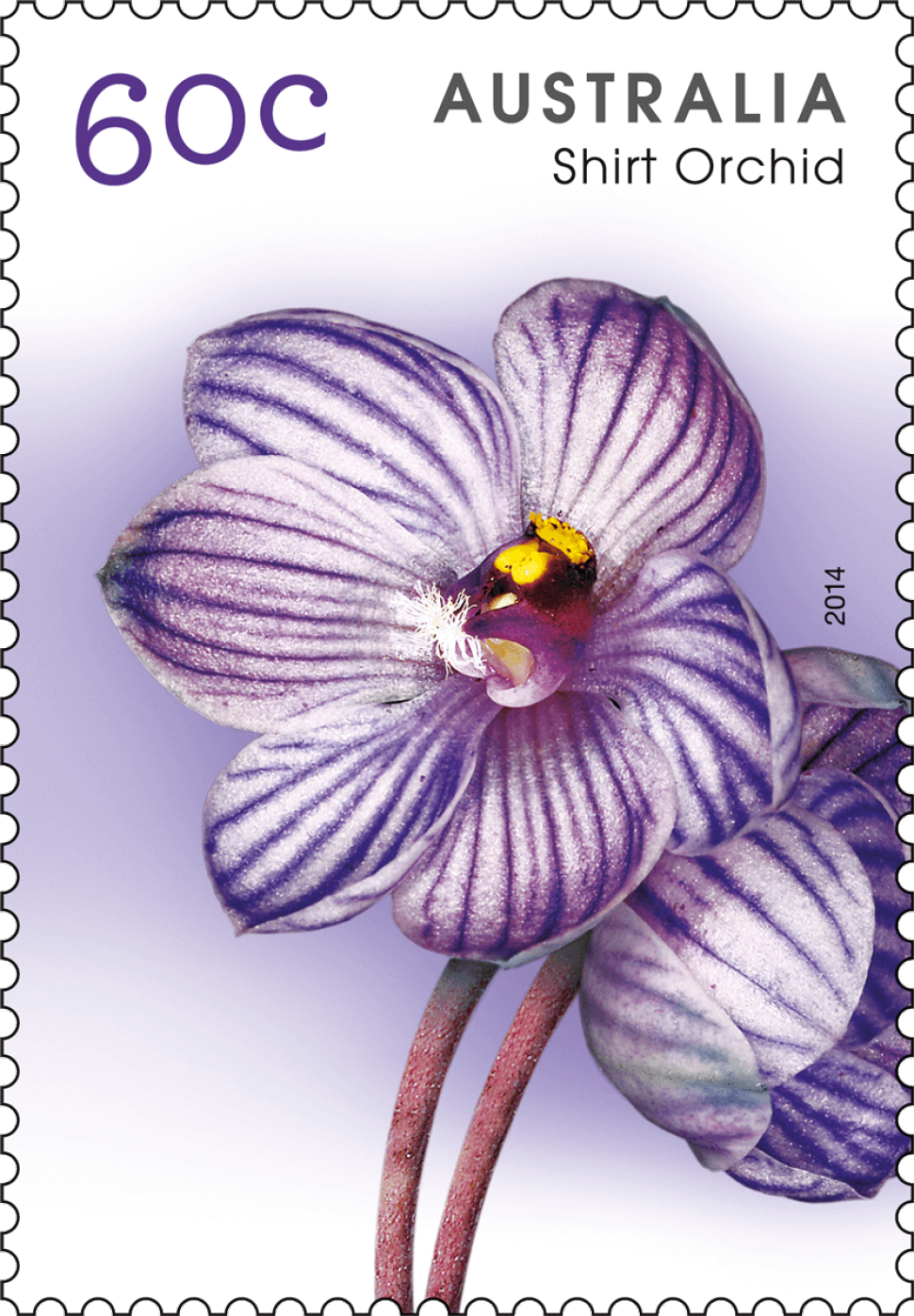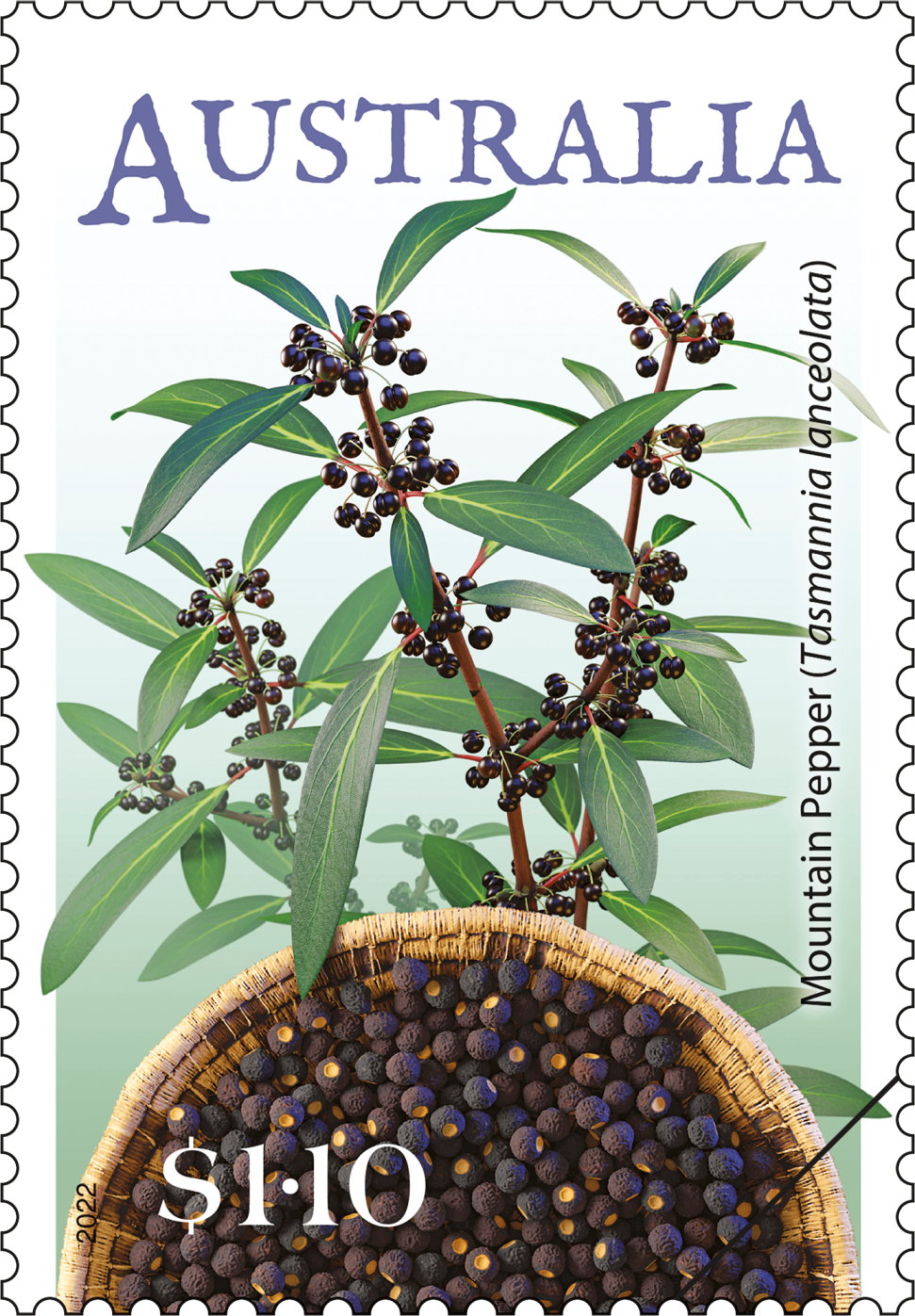Known for their often exquisite flowers, orchids are the largest family of flowering plants in the world with over 30,000 species identified. They are distributed in most countries and are especially prolific in tropical regions, where the majority of species grow on the trunks and branches of trees (epiphytic). In temperate regions, such as southern Australia, most orchids grow in the ground (terrestrial). They are pollinated in different ways including by native bees and wasps.
In Australia there are around 1300 orchid species with 95 per cent of these not found anywhere else in the world. A number of these also have some extremely specialised adaptations not seen elsewhere in the orchid family. For example two species of native orchids spend their entire life-cycle underground, and many ground orchids from southern Australia have become so specialised that they deceive and lure the males of a single species of insect to their flowers to ensure pollination.
Orchids are either terrestrial, meaning that they have their root system underground, or epiphytic, where they grow on host trees for support, clinging on with their strongly developed root system. These roots take advantage of the moisture and organic debris that are caught in the crevices and bark of the host for nourishment purposes. All additional moisture and nutrients that are required are absorbed from the humid tropical air, rain, and mosses, ferns and fungal symbionts. Other orchids are lithophytic, which is a subset of the epiphytic orchids. These orchids grow on exposed rocks. They have strong roots that burrow into small crevices and absorb moisture and nutrients found amongst the moss and organic debris that collect in them.
Orchids represented on the stamps are found in various parts of Australia, including Tasmania, Western Australia, Victoria, New South Wales and Queensland.
Designer
Sonia Young, Australia Post Design Studio.
Products released in this issue
- First day cover
- Stamp pack
- Maxicards
- Self-adhesive booklet of 10
Technical specifications
- Issue date
- 14 January 2014
- Issue withdrawal date
- 31 July 2014
- Denominations
- 4 x 60c
- Stamp design
- Sonia Young, Australia Post Design Studio
- Product design
- Sonia Young, Australia Post Design Studio
- Photographer
- Gary Backhouse
- Paper - gummed
- Tullis Russell
- Printer - gummed
- EGO
- Paper self-adhesive
- B100
- Printer self-adhesive
- EGO
- Printing process
- Lithography
- Stamp size
- 26mm x 37.5mm
- Perforations
- 13.86 x 14.6
- Sheet layout
- Module of 50
- FDI postmark
- Glenorchy, TAS 7010
- FDI withdrawal date
- 11 February 2014
Dockrillia striolata, also called the Streaked Rock Orchid is a lithophytic species found in south-eastern Australia. The subspecies chrysantha, meaning golden, is endemic to Tasmania, where it grows on cliff faces and granite boulders. It is fairly common on the central and north-eastern coast of Tasmania up to 200 metres.
This subspecies has comparatively brighter butter yellow petals and sepals that either lack stripes or are only faintly striped. The flowers are also slightly larger, at about 25 millimetres in diameter. The fragrant, creamy yellow flowers appear in spring, in September and October. Tasmania has about 210 species of native orchids.
A terrestrial orchid, also called the Dancing Spider Orchid, endemic to Western Australia, where it is widespread in the south-west. The name means club-bearing and refers to the broad, flat, deeply fringed labellum. It is one of the spider orchids (genus Caladenia, so named for its spider-like petals).
It favours sedgy flats in open sandy forests of the south, particularly on the coastal planes and slopes from north of Perth to Albany and Esperance. It flowers from August to October. It is a slender hairy plant to 35 centimetres high with a long lanceolate hairy leafy. One to three flowers (20 to 30 mm in diameter) bloom on long pedicels well displayed on the erect hairy stem, and are coloured yellowish-green, red and deep purplish-red.
The name of this orchid refers to the similarity of its flowers, in both scent and shape, to orange blossoms. It is widely distributed throughout eastern Australia, from eastern Victoria and New South Wales up through to Cape York Peninsula in Queensland. It favours airy situations and can be found growing on trees in or near moist forests. It can be found from coastal areas right up the Great Dividing Range to an altitude of 1200 metres.
This orchid is largely an epiphytic species, but it can also be lithophytic. It readily forms clumps, made up entirely of groups of sickle-shaped leaves. These leaves are leathery, pale green and curved and number anywhere between three and 14 per plant. S. falcatus also produces many thin wiry green roots which can branch out up to one metre from the parent plant. It can produce up to ten flowers, each being around three centimetres across, anytime from June to October. The flower form of S. falcatus is extremely variable across its range. The most common form has snow white petals, purple striped sepals, and orange and yellow markings on the lip. Other variations include a large flowered form with pale yellow markings. Flower shape also varies dramatically from one area to another.
Also called the Bell Sun Orchid, this orchid is endemic to the south-west of Western Australia. It is widely distributed through near-coastal areas from the Murchison River to Israelite Bay east of Esperance. It grows in sandy tracts of open heath lands and coastal woodlands and flowers in spring in September and October. Two distinctive features have contributed to its two popular names: the small flowers often have a bell-shaped appearance, hence the Bell Sun Orchid, and the fine striping on petals and sepals suggest the Shirt Orchid.
It is somewhat variable in plant size and colouring. It ranges from 30 to 50 centimetres in height and is usually a slender plant with a long linear channelled leaf and several acuminate stem-bracts. The flower colours range from pale to deep blue, or pink to mauve, with clearly marked longitudinal stripes in deep tonings.
This content was produced at the time of the stamp issue release date and will not be updated.
